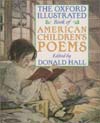
Today is the one year anniversary of the hurricane that devastated New Orleans, southern Mississippi, and other parts of the Gulf Coast. I heard on the news this morning that 70,000 New Orleans residents have set up permanent residence in my north Texas area. I can’t imagine what a traumatic experience all this upheaval has been for them. I’ve been to New Orleans myself many times (since it’s only an 8 hour drive away) and have returned twice since Katrina hit there. The devastation—even a year later—was incredible. Many ninth ward neighborhoods are still a stroganoff of houses, cars, trees, and debris. People’s HOMES. And the city itself is still operating at half capacity. A vibrant, fun-loving city like New Orleans brought to its knees—it’s ankles, even. So sad. How do we share these experiences with children? How do we capture what we are all feeling? One poem by Janet Wong comes pretty close to conveying the differing emotions and perspectives that have bubbled to the surface. Janet was kind enough to write this as a poem for my book, POETRY ALOUD HERE! SHARING POETRY WITH CHILDREN IN THE LIBRARY (ALA, 2006) and it’s featured there alongside a moving and inspiring essay that she wrote. Meanwhile, as a tribute to the children of Katrina, here is the poem itself.
Coin Drive
by Janet S. Wong
There’s a coin drive going on at our school
for children hurt by the hurricane.
Teacher says, “Handful of dimes is fine.
But only give if you want to share.”
Momma says, “Those people should have known.
Should have done more than they did to get out.”
Poppa says, “Look how those people stole.
Criminals. Animals, them. Their kind.”
I saw the pictures, too, myself.
People with nothing, no cars, for sure.
Swollen old ladies could barely walk.
Crazy boys with stolen guns,
but also daddies grabbing bread.
I saw the pictures, too, myself.
So many bodies floating, dead.
Waiting, water creeping up,
up past neck, past mouth, past eyes.
How long did they wait for help?
I feel proud for the fifty cents
I put today in the coin drive jar.
I feel proud that I can say:
I saw the pictures for myself.
This poem and a few others are featured on Janet’s excellent web site:
http://www.janetwong.com
Other books of poetry by Janet Wong:
Behind the Wheel: Poems about Driving
Good Luck Gold and Other Poems
Knock on Wood: Poems about Superstitions
Minn and Jake
Night Garden: Poems from the World of Dreams
The Rainbow Hand: Poems about Mothers and Children
A Suitcase of Seaweed, and Other Poems










